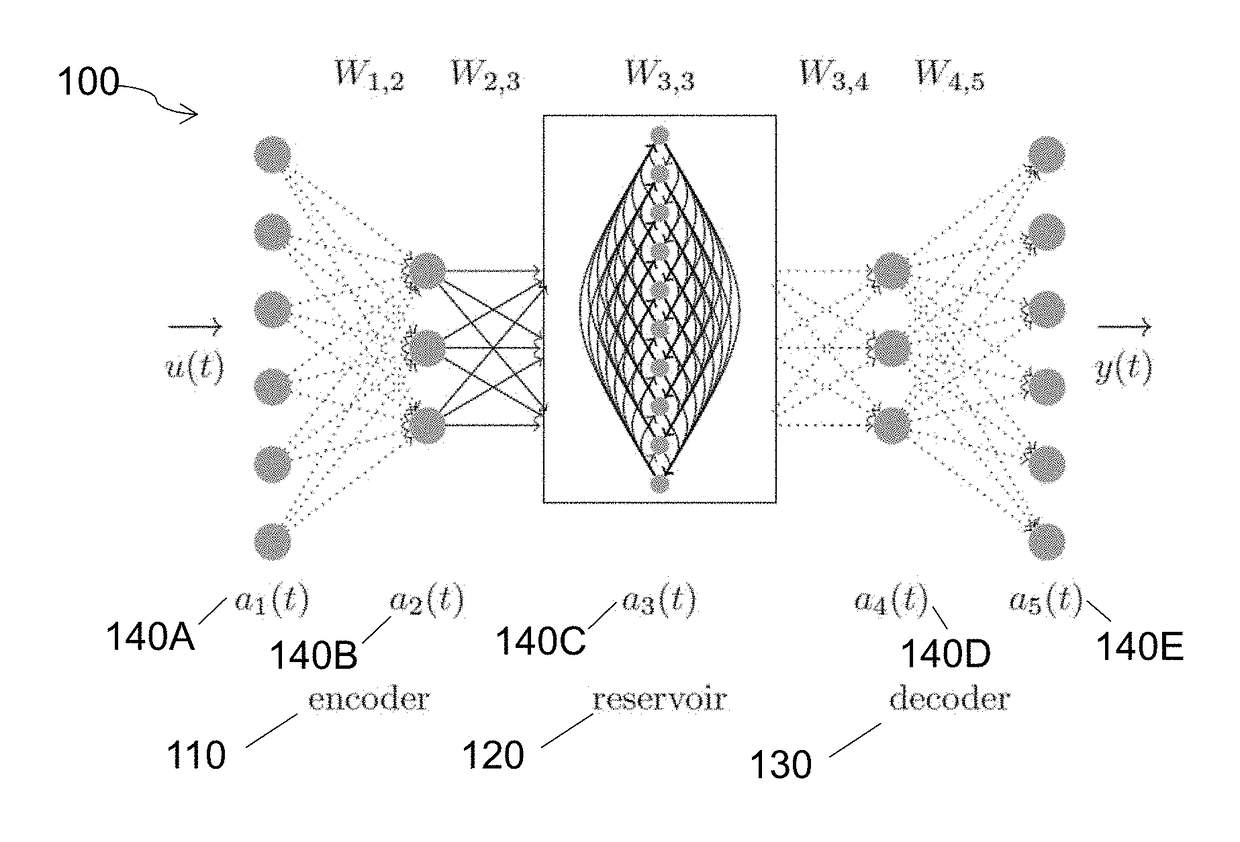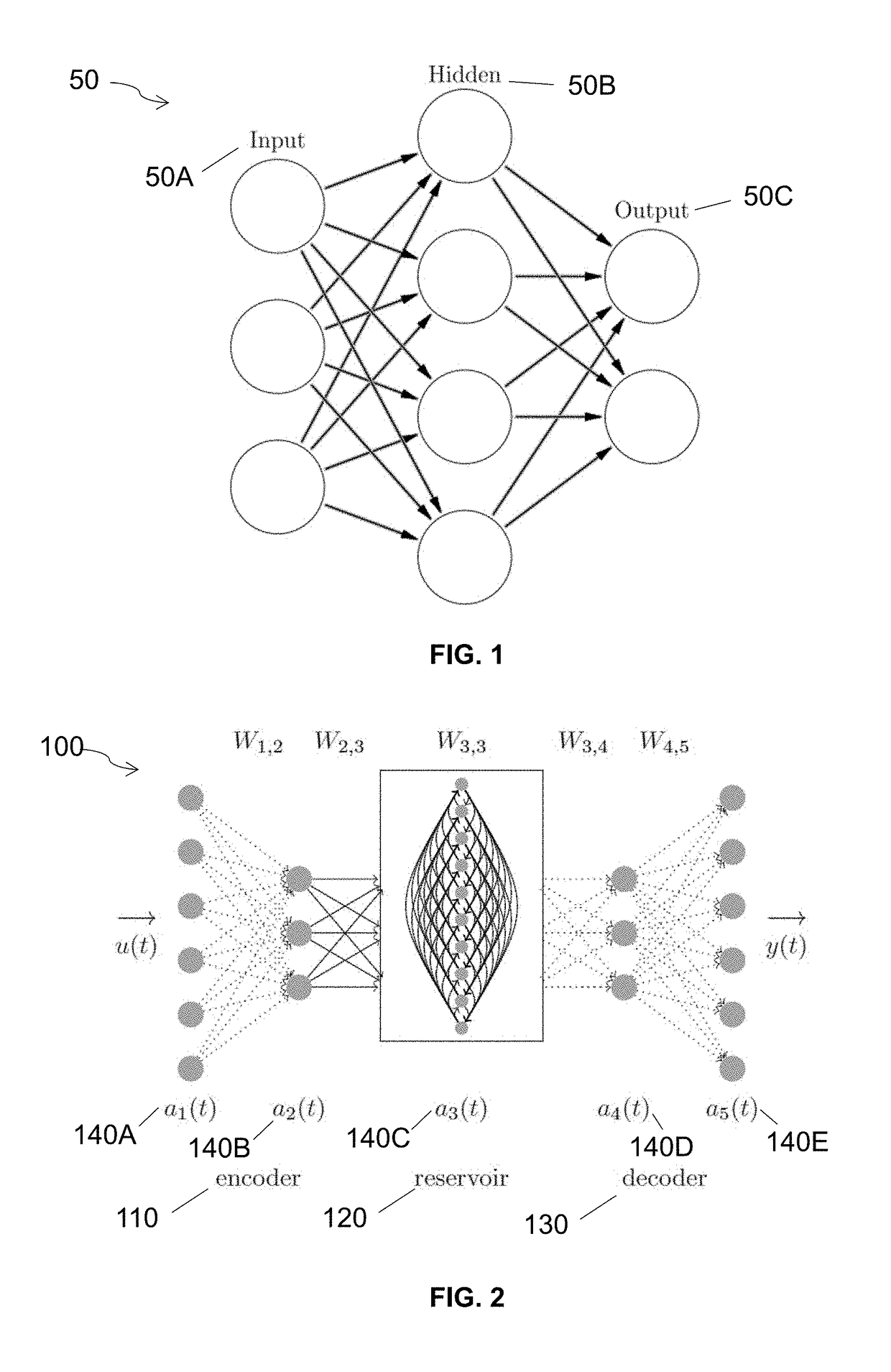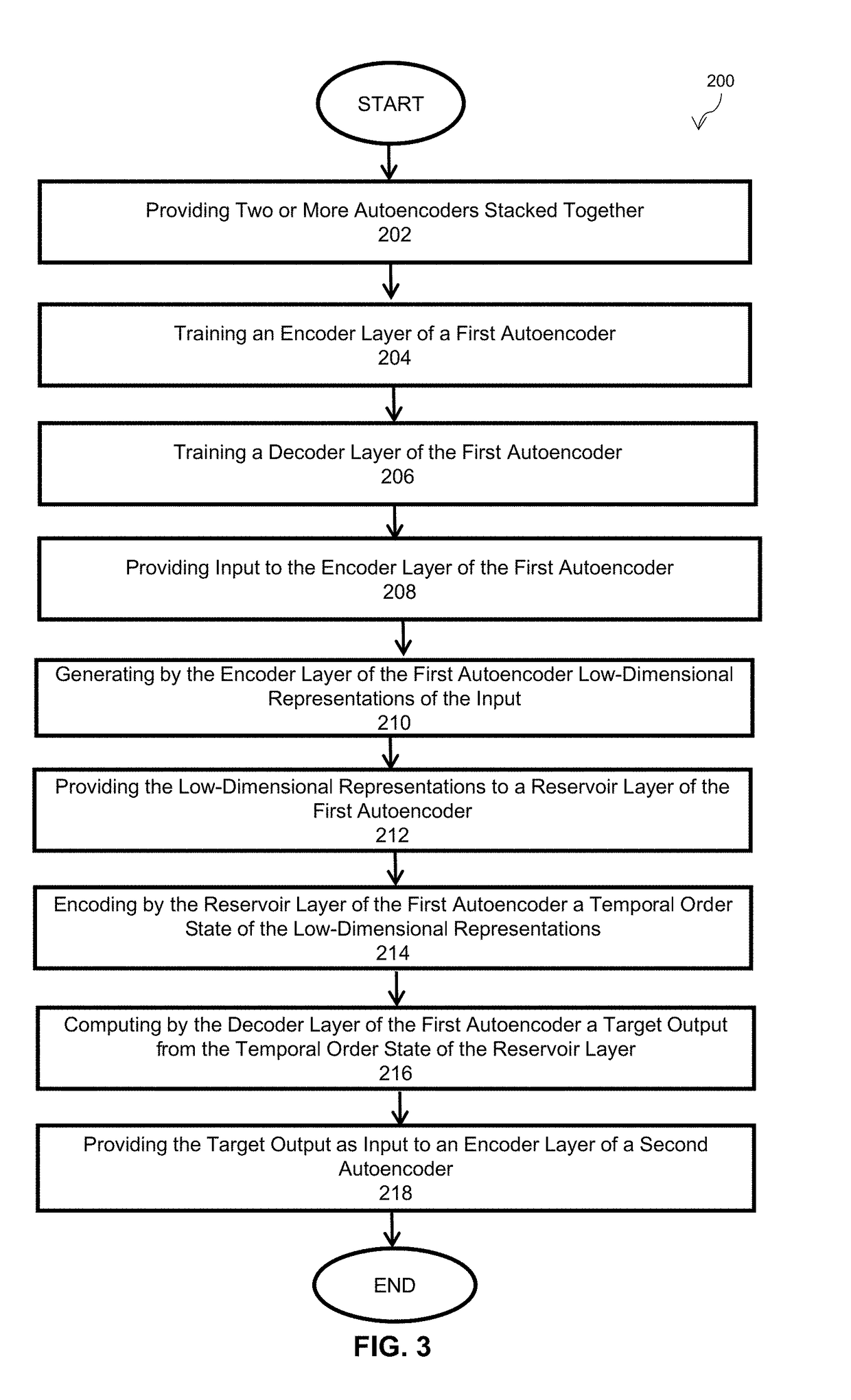Hybrid architecture system and method for high-dimensional sequence processing
a sequence processing and hybrid architecture technology, applied in the field of neural networks, can solve the problems of requiring computationally expensive training, and limiting the application of the system, so as to preserve the locality in the compressive space
- Summary
- Abstract
- Description
- Claims
- Application Information
AI Technical Summary
Benefits of technology
Problems solved by technology
Method used
Image
Examples
Embodiment Construction
[0034]The invention is directed to a hybrid architecture based on deep denoising autoencoders and echo state networks for real-time processing of high-dimensional input. Despite accurate time series processing performance echo state networks (ESNs) have been limited to low-dimensional inputs owing to their limited capacity. The invention separates spatial and temporal correlation by first creating a low-dimensional representation of the data that is embedded in the short-term memory of echo state networks providing an alternative to recurrent neural network with fast and modular training. The use of autoencoders is fundamental to the success of the hybrid architecture as compared to previous attempts of scaling up echo state networks that used principal component analysis (PCA).
[0035]According to the invention, dimensionality of an input is reduced and fed to a downstream echo state network (ESN), a popular reservoir computing architecture. ESN has been shown to have excellent abili...
PUM
 Login to View More
Login to View More Abstract
Description
Claims
Application Information
 Login to View More
Login to View More - R&D
- Intellectual Property
- Life Sciences
- Materials
- Tech Scout
- Unparalleled Data Quality
- Higher Quality Content
- 60% Fewer Hallucinations
Browse by: Latest US Patents, China's latest patents, Technical Efficacy Thesaurus, Application Domain, Technology Topic, Popular Technical Reports.
© 2025 PatSnap. All rights reserved.Legal|Privacy policy|Modern Slavery Act Transparency Statement|Sitemap|About US| Contact US: help@patsnap.com



